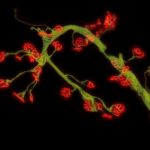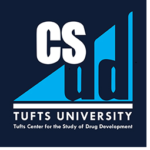Trend Chart On Innovative Bioindustries – July 2020, 29th
FEATURE STORY
![]() GSK and CureVac announce strategic mRNA technology collaboration
GSK and CureVac announce strategic mRNA technology collaboration
GSK and CureVac announced on July 20th the signing of a strategic collaboration agreement for the research, development, manufacturing and commercialisation of up to five mRNA-based vaccines and monoclonal antibodies targeting infectious disease pathogens. The collaboration complements GSK’s existing mRNA capabilities with CureVac’s integrated mRNA platform. mRNA (messenger RNA) technology is a rapidly progressing, cutting-edge platform for the development of new vaccines and medicines, potentially expanding the range of diseases which can be prevented or treated, while also promising to significantly speed up development and manufacturing. mRNA enables protein synthesis in the human body, carrying the genetic code required for cells to manufacture and express proteins. By using mRNA technology in vaccines and medicines, specific proteins, or antigens, can be produced by the body’s own cells, enabling the human immune system to prevent or fight disease. CureVac’s leadership in mRNA technology, along with its mRNA manufacturing capability, complements GSKs existing scientific leadership in vaccines, including GSKs own self-amplifying mRNA (SAM) vaccine technology platform, and further builds on GSKs growing capability in mAbs innovation, aligned to its R&D focus on the science of immunology. Advancing mRNA-based vaccine and treatment technologies is also expected to play a role in further improving response against future pandemics. For further information
Related Informations/Publications
-JUL 2020: EIB and European Commission provide CureVac with a €75 million financing for vaccine development and expansion of manufacturing
Results/Comments: The transaction is financed under the Infectious Diseases Finance Facility of Horizon 2020, the EU research and innovation programme for 2014-2020. Link: Press Release
-JUN 2020: CureVac Receives Regulatory Approval from German and Belgian Authorities to Initiate Phase 1 Clinical Trial of its SARS-CoV-2 Vaccine Candidate. Link: Press Release
-JUN 2020: German Federal Government invests 300 Million Euros in CureVac. Link: Press Release
![]() Four Unicorns in the Race for a mRNA-based Vaccine against Covid-19
Four Unicorns in the Race for a mRNA-based Vaccine against Covid-19
BioNTech, Curevac, Moderna, Translate Bio….These four biotech are now developing mRNA-based vaccine candidates against SARS-CoV-2 and have reached the clinical stage. These programs could lead to short-term boosts for these companies’s shares. However, addressing epidemics is still a risky business. So far, it isn’t the most profitable area for companies and decision makers in health, industry and politics need a comprehensive overview of their businesses. Our latest report “Four Unicorns in the Race for a mRNA-based Vaccine against Covid-19” can help you to find out main assets and strengths of these companies…
This 56-page publication lists and develops in detail for each company:
• General informations (location, website, FTE, management….)
• Core Business and Corporate informations
• Recent Fundings and Financial Highlights (grants, funding rounds, revenues, R&D expenses….)
• Pipeline (target indications mechanism of action, stage of development…)
• Orphan drug designations
• Ongoing Clinical Trials (phase, status, start and completion date, planned enrollment…)
• Latest Developments
• Latest Scientific Publications
Want to have a look at this report ? Click to download sample pages
Want to buy the report ? Download the order form or Register and create an account on our website and click on ADD TO CART
BASIC SCIENCE
![]() Potent neutralizing antibodies directed to multiple epitopes on SARS-CoV-2 spike
Potent neutralizing antibodies directed to multiple epitopes on SARS-CoV-2 spike
The SARS-CoV-2 pandemic rages on with devasting consequences on human lives and the global economy. The discovery and development of virus-neutralizing monoclonal antibodies could be one approach to treat or prevent infection by this novel coronavirus. In a recent publication, researchers have reported the isolation of 61 SARS-CoV-2-neutralizing monoclonal antibodies from 5 infected patients hospitalized with severe disease. Among these are 19 antibodies that potently neutralized the authentic SARS-CoV-2 in vitro, 9 of which exhibited exquisite potency, with 50% virus-inhibitory concentrations of 0.7 to 9 ng/mL. Epitope mapping showed this collection of 19 antibodies to be about equally divided between those directed to the receptor-binding domain (RBD) and those to the N-terminal domain (NTD), indicating that both of these regions at the top of the viral spike are immunogenic. The results appeared in July 22nd online issue of Nature
Related Informations/Publications
–Science. 2020 Jul 21:eabd4251. Distinct conformational states of SARS-CoV-2 spike protein Cai Y et al. Boston Children’s Hospital, Boston, MA 02115, USA. Link: Abstract
–J Immunol Res. 2020 Jul 18;2020:7201752. Protective Immunity against SARS Subunit Vaccine Candidates Based on Spike Protein: Lessons for Coronavirus Vaccine Development Khalaj-Hedayati A. Faculty of Health and Medical Sciences, Taylor’s University, Subang Jaya, Malaysia. Link: Abstract
–medRxiv. 2020 Jul 8:2020.07.07.20148106. Novel SARS-CoV-2 specific antibody and neutralization assays reveal wide range of humoral immune response during COVID-19 Dogan M et al. The Jackson Laboratory, Farmington, CT, USA. Link: Abstract – Full Text
CLINICAL TRIALS/DATAS
![]() Moderna announces interim results from Phase 1 Study of its mRNA vaccine against COVID-19
Moderna announces interim results from Phase 1 Study of its mRNA vaccine against COVID-19
Moderna announced on July 14th the publication of an interim analysis of the open-label Phase 1 study of mRNA-1273, its vaccine candidate against COVID-19, in The New England Journal of Medicine. This interim analysis evaluated a two-dose vaccination schedule of mRNA-1273 given 28 days apart across three dose levels (25, 100, 250 µg) in 45 healthy adult participants ages 18-55 years, and reports results through Day 57. Results from participants in the initial dose cohorts who received both vaccinations and were evaluated at pre-specified timepoints reaffirm the positive interim data assessment announced on May 18thand show mRNA-1273 induced rapid and strong immune responses against SARS-CoV-2. The study was led by the National Institute of Allergy and Infectious Diseases (NIAID), part of the National Institutes of Health (NIH). For further information
Related Informations / Publications
–NEJM July 14, 2020. Jackson LA et al. From Kaiser Permanente Washington Health Research Institute (L.A.J.) and the Center for Global Infectious Disease Research (CGIDR), Seattle Children’s Research Institute (USA).
Results/Comments: This article presents an interim analysis of the phase I study of mRNA-1273. Results from participants in the initial dose cohorts reaffirm the positive data assessment announced in May and show that mRNA-1273 induced rapid and strong immune responses against SARS-CoV-2. Link: Full Text
–JUL 2020: Moderna to Join the NASDAQ-100 Index Beginning July 20, 2020. Link: Press Release
–JUL 2020: Moderna Completes Enrollment of Phase 2 Study of its mRNA Vaccine Against COVID-19 (mRNA-1273).Link: Press Release
–MAY 2020: Moderna Announces First Participants in Each Age Cohort Dosed in Phase 2 Study of mRNA Vaccine (mRNA-1273) Against Novel Coronavirus. Link: Press Release
![]() Safety and immunogenicity of the ChAdOx1 nCoV-19 vaccine against SARS-CoV-2
Safety and immunogenicity of the ChAdOx1 nCoV-19 vaccine against SARS-CoV-2
British researchers recently reported the results of a phase 1/2, single-blind, randomised controlled trial in five trial sites in the UK of a chimpanzee adenovirus-vectored vaccine (ChAdOx1 nCoV-19) expressing the SARS-CoV-2 spike protein compared with a meningococcal conjugate vaccine (MenACWY) as control. Healthy adults aged 18–55 years with no history of laboratory confirmed SARS-CoV-2 infection or of COVID-19-like symptoms were randomly assigned (1:1) to receive ChAdOx1 nCoV-19 at a dose of 5 × 1010 viral particles or MenACWY as a single intramuscular injection. A protocol amendment in two of the five sites allowed prophylactic paracetamol to be administered before vaccination. Ten participants assigned to a non-randomised, unblinded ChAdOx1 nCoV-19 prime-boost group received a two-dose schedule, with the booster vaccine administered 28 days after the first dose. Humoral responses at baseline and following vaccination were assessed using a standardised total IgG ELISA against trimeric SARS-CoV-2 spike protein, a muliplexed immunoassay, three live SARS-CoV-2 neutralisation assays (a 50% plaque reduction neutralisation assay [PRNT50]; a microneutralisation assay [MNA50, MNA80, and MNA90]; and Marburg VN), and a pseudovirus neutralisation assay. Cellular responses were assessed using an ex-vivo interferon-γ enzyme-linked immunospot assay. The co-primary outcomes are to assess efficacy, as measured by cases of symptomatic virologically confirmed COVID-19, and safety, as measured by the occurrence of serious adverse events. Analyses were done by group allocation in participants who received the vaccine. Safety was assessed over 28 days after vaccination. The results appeared in July 20th online issue of The Lancet
Related Informations / Publications
– BioRxiv, 2020 May 13;2020.05.13.093195. ChAdOx1 nCoV-19 vaccination prevents SARS-CoV-2 pneumonia in rhesus macaques. Van Domeralen et al. Laboratory of Virology, National Institute of Allergy and Infectious Diseases, National Institutes of Health, Hamilton, MT, USA
Results/Comments: Safety, immunogenicity and efficacy against symptomatic PCR-positive COVID-19 disease will now be assessed in randomised controlled human clinical trials. Link: Abstract – Full Text
–Nat Commun. 2020 Jul 9;11(1):3523. Self-amplifying RNA SARS-CoV-2 lipid nanoparticle vaccine candidate induces high neutralizing antibody titers in mice. McKay PF et al. Department of Infectious Diseases, Imperial College London, Norfolk Place, London, W2 1PG, UK. Link: Abstract – Full Text
–Life Sci. 2020 Jul 6;257:118056. Structural features of coronavirus SARS-CoV-2 spike protein: Targets for vaccination. Sternberg A et al. Center and Network for Targeted Oncology, Muehlackerweg 8, D-69239 Heidelberg, Germany. Lnk: Abstract – Full Text
 Biogen plans to initiate phase 4 study evaluating benefit of Spinraza® in patients treated with Zolgensma®
Biogen plans to initiate phase 4 study evaluating benefit of Spinraza® in patients treated with Zolgensma®
Biogen announced on July 21st that it plans to initiate a global Phase 4 clinical study, RESPOND, to examine the clinical benefit and assess the safety of Spinraza® (nusinersen) in infants and children with spinal muscular atrophy (SMA) who still have unmet clinical needs following treatment with gene therapy Zolgensma® (onasemnogene abeparvovec). In the long-term study of Zolgensma®, it has been reported that, to date, 4 out of 10 patients have been subsequently treated with Spinraza®. Based on the planned study design, RESPOND will be a two-year, open-label study to evaluate the efficacy and safety of Spinraza® in SMA patients previously treated with Zolgensma® to further inform treatment decisions. Efficacy will be assessed by change from baseline on motor function measures, additional clinical outcomes (e.g., swallowing) and caregiver burden. Neurofilament levels, an exploratory endpoint, will also be evaluated as a marker of biological disease activity. The primary study group aims to include 40 infants aged 9 months or younger (at the time of first Spinraza® dose) who have 2 copies of SMN2 (likely to develop SMA Type 1) and received Zolgensma at 6 months old or younger. A second study group will include 20 children and will generate data in patients with a broader age range (up to 3 years old at the time of first Spinraza® dose). After a screening period, participants will receive the approved 12 mg dose of Spinraza®, which is four loading doses followed by maintenance doses every four months, over the two-year study period. For further information
Related Informations / Publications
–Expert Opin Biol Ther. 2020 Jul;20(7):823-827. Will the US$5 million onasemnogene abeparvosec treatment for spinal muscular atrophy represent ‘value for money’ for the NHS? A rapid inquiry into suggestions that it may be cost-effective. Connock et al. University of Warwick, Coventry, UK. Link: Abstract
-J Clin Med. 2020 Jul 13;9(7):E2222. New Treatments in Spinal Muscular Atrophy: Positive Results and New Challenges. Messina et al, University Hospital “G. Martino”, 98125 Messina, Italy
Results/Comments: This review covers the available data and the new challenges of SMA therapeutic strategies. Link: Abstract
–Med Res Rev. 2020 Jul 8. Modern approaches in gene therapy of motor neuron diseases. Zakharova M, Research Center of Neurology, Moscow, Russia
Results/Comments: The numerous molecular and genetic overlaps between different neurodegenerative diseases are of great importance in the development of innovative therapeutic strategies, including viral vector therapy and RNA modulating approaches. Link: Abstract
GENE THERAPY
 Gene therapy development in hearing research in China
Gene therapy development in hearing research in China
Sensorineural hearing loss, the most common form of hearing impairment, is mainly attributable to genetic mutations or acquired factors, such as aging, noise exposure, and ototoxic drugs. In the field of gene therapy, advances in genetic and physiological studies and profound increases in knowledge regarding the underlying mechanisms have yielded great progress in terms of restoring the auditory function in animal models of deafness. Nonetheless, many challenges associated with the translation from basic research to clinical therapies remain to be overcome before a total restoration of auditory function can be expected. In recent years, Chinese research teams have promoted various developmental efforts in this field, including gene sequencing to identify additional potential loci that cause deafness, studies to elucidate the underlying molecular mechanisms, and research to optimize vectors and delivery routes. In this review, the researchers summarize the state of the field and focus mainly on the progress of gene therapy in animal model studies and the optimization of therapeutic strategies in China. The review appeared in July 17th online issue of Gene Ther.
Related Informations / Publications
–Hear Res. 2020 Jun 18:107999. Characterization of promoters for adeno-associated virus mediated efficient Cas9 activation in adult Cas9 knock-in murine cochleae. Zhao X et al. Shanghai Jiaotong University School of Medicine, No.639, Zhizaoju Road, Shanghai, 200011, PR China. Link: Abstract
-Gene Ther. 2020 May 18. Recent development of AAV-based gene therapies for inner ear disorders Lan Y et al. iHuman Institute, ShanghaiTech University, Shanghai, 201210, China. Link: Abstract
–JUN 2020: Sensorion announces positive preliminary preclinical data from its Otoferlin gene therapy program Results/Comments: In vivo experiments conducted safely in non-human primates show promising preliminary data on inner ear tissue tropism and the achievement of a high transduction rate efficiency. Link: Press Release
INDUSTRIAL LANDSCAPE & AGREEMENTS
 Forge Biologics launches with 40 MUS$ series A financing to manufacture and develop gene therapies
Forge Biologics launches with 40 MUS$ series A financing to manufacture and develop gene therapies
Forge Biologics, a viral vector gene therapy manufacturing and development company with the dual platform of CDMO capabilities and the development of proprietary gene therapy products, announced on July 21st the closing of a $40 million Series A financing led by the Perceptive Xontogeny Venture Fund (“PXV Fund”) with participation from Drive Capital. Forge will use the proceeds of this financing to expand AAV manufacturing CDMO capabilities in 2020, with cGMP production capacity available by mid-2021, and for the development of a novel gene therapy pipeline. Forge Biologics is a viral vector CDMO and therapeutics developer, located in a 175,000 ft2 facility in Columbus, Ohio. This facility, referred to as The Hearth, is home to a custom-designed cGMP facility dedicated to AAV viral vector manufacturing, currently capable of up to 50L scale research and toxicology grade AAV manufacturing. By mid-2021, The Hearth will host end-to-end cGMP AAV manufacturing services at 500L scale, enabling biotech and pharma clients the ability to accelerate their gene therapy programs from pre-clinical development through clinical and commercial stage manufacturing. For further information
Related Informations / Publications
–Hum Gene Ther. 2019 Sep;30(9):1039-1051. An Engineered Galactosylceramidase Construct Improves AAV Gene Therapy for Krabbe Disease in Twitcher Mice. Pan X et al. School of Medicine, University of Missouri, Columbia, Missouri, USA.
Results/Comments: The study highlights the importance of vector (AAV9) engineering for Krabbe disease gene therapy. The engineered vector warrants further development. Link: Abstract
–Bioimpacts. 2020;10(2):105-115. Conditions for combining gene therapy with bone marrow transplantation in murine Krabbe disease Rafi MA et al. Thomas Jefferson University, Philadelphia, PA 19107, USA
Results/Comments: These studies are critical to the planning of a human trial combining the “standard of care”, HSCT, with a single iv injection of AAVrh10-GALC. Link: Abstract – Full Text
 Translate Bio announces closing of expanded collaboration and licensing agreement with Sanofi Pasteur to develop mRNA vaccines for all infectious diseases
Translate Bio announces closing of expanded collaboration and licensing agreement with Sanofi Pasteur to develop mRNA vaccines for all infectious diseases
Translate Bio, a clinical-stage mRNA therapeutics company developing a new class of potentially transformative medicines to treat diseases caused by protein or gene dysfunction, announced on July 20th the closing of a previously announced expansion of the collaboration and licensing agreement with Sanofi Pasteur to develop mRNA vaccines for all infectious disease pathogens, following notice of early termination of the waiting period under the Hart-Scott-Rodino Antitrust Improvements Act of 1976. Under the terms of the agreement, Translate Bio will receive $425 million in upfront payment and common stock equity investment and overall is eligible to receive up to $1.9 billion of potential milestones and other payments as well as tiered royalties on worldwide sales of developed vaccines. In turn, Sanofi received exclusive worldwide rights for infectious disease mRNA vaccines. Sanofi will pay for all costs during the collaboration term. For further information
Related Informations / Publications
-JUN 2020: Sanofi and Translate Bio Expand Collaboration to Develop mRNA Vaccines Across All Infectious Disease Areas
Results/Comments: Translate Bio to receive $425 million in upfront payment and common stock equity investment and overall is eligible to receive up to $1.9 billion of potential milestones/payments as well as tiered royalties on worldwide sales of developed vaccines. Link: Press Release
–MAR 2020: Sanofi Pasteur and Translate Bio to Collaborate to Develop a Novel mRNA Vaccine Candidate Against COVID-19
Results/Comments: This collaboration leverages an existing agreement from 2018 between the two companies to develop mRNA vaccines for infectious diseases. Link: Press Release
–NPJ Vaccines. 2020 Feb 4;5:11. The promise of mRNA vaccines: a biotech and industrial perspective. Jackson NAC et al. Coalition for Epidemic Preparedness Innovations (CEPI), Gibbs building, 215 Euston Road, Bloomsbury, London, NW1 2BE UK. Link: Abstract – Full Text
 Encoded Therapeutics announces 135MUS$ Series D financing to support first clinical trials in Dravet syndrome
Encoded Therapeutics announces 135MUS$ Series D financing to support first clinical trials in Dravet syndrome
Encoded Therapeutics, a precision gene therapy company, announced on July 22nd that it has raised 135 MUS$ in an oversubscribed Series D financing. GV (formerly Google Ventures) led the Series D financing with participation from Matrix Capital Management, ARCH Venture Partners, Illumina Ventures, RTW Investments, Boxer Capital, Nolan Capital, HBM Genomics, Menlo Ventures, Meritech Capital, Farallon Capital Management, SoftBank Vision Fund 2, and additional unnamed investors. Proceeds from the Series D will be used to conduct clinical trial activities including a natural history study to better understand the progression of SCN1A+ Dravet Syndrome as well as first-in-human trials for ETX101. Additionally, the funds will support progression of the company’s pipeline of gene therapies being evaluated for additional pediatric CNS disorders. The company also announced that its lead asset, ETX101, was granted Orphan Drug Designation (ODD) and Rare Pediatric Disease Designation by the FDA for the treatment of SCN1A+ Dravet syndrome. For further information
Related Informations / Publications
–Neurobiol Dis. 2020 Jul;141:104954. CRISPR/dCas9-based Scn1a gene activation in inhibitory neurons ameliorates epileptic and behavioral phenotypes of Dravet syndrome model mice Yamagata T et al. University Graduate School of Medical Sciences, Nagoya, Aichi 467-8601, Japan. Link: Abstract – Full Text
–Drugs. 2019 Dec;79(18):1917-1935. Drug Development for Rare Paediatric Epilepsies: Current State and Future Directions. Auvin S et al. Hôpital Universitaire Robert-Debré, 48, Boulevard Sérurier, 75935, Paris Cedex 19, France
Results/Comments: Researchers here provide some suggestions for future improvements in orphan drug development such as promoting paediatric drug investigations, better evaluation of the incidence and the prevalence, together with the natural history data, and the development of new primary outcomes. Link: Abstract
–JUN 2019: Encoded Therapeutics bags $104M to propel ‘precision gene therapy’ for Dravet syndrome Link: FierceBiotech
MISCELLANEOUS
 New Tufts CSDD white paper highlights changes to the drug development workforce in response to digital disruption and transformation
New Tufts CSDD white paper highlights changes to the drug development workforce in response to digital disruption and transformation
Tufts Center for the Study of Drug Development (Tufts CSDD) announced on July 21st the release of its new white paper, ‘Drug Development Workforce in the Age of Digital Transformation.’ The white paper summarizes insights and experiences shared at a senior executive roundtable organized and run by Tufts CSDD. The roundtable, held earlier in the year, was funded in part by an educational grant from Pfizer, Inc. Sixty executives, representing pharmaceutical and biotechnology companies, contract services organizations, technology solutions providers, trade organizations and academia, met to discuss the current state of the drug development workforce. Participants discussed their organizations’ preparedness to navigate the growing need for new and emerging skills and competencies and the operating conditions necessary to become digitally proficient. The report concludes with concrete and practical steps that organizations can and should take to retain and attract this new and transformed work force. For further information
Related Informations / Publications
–Health Services Research 2018;53(S1):2758-2769. Rising Drug Costs Drives the Growth of Pharmacy Benefit Managers Exclusion Lists: Are Exclusion Decisions Value‐Based? Cohen JP et al. Tufts Center for the Study of Drug Development, Boston, MA, USA. Link: Abstract
–Therapeutic Innovation & Regulatory Science 2018;52(2):220-229. Assessing the Financial Value of Patient Engagement: A Quantitative Approach From CTTI’s Patient Groups and Clinical Trials Project. Levitan B et al. Janssen R&D, Titusville, NJ, USA. Link: Full Text
–Nature Reviews Drug Discovery 2018;(17):703-704. Trends driving clinical trials into large clinical care settings. Getz KA et al. Tufts Center for the Study of Drug Development, Boston, MA, USA. Link: Article Reference
–Journal of Health Economics 2016;47:20-33. Innovation in the pharmaceutical industry: New estimates of R&D costs. DiMasi JA et al. Tufts Center for the Study of Drug Development, Boston, MA, USA. Link: Abstract
©BioPharmAnalyses and OctopusyX BioConsulting



COMMENTS ARE OFF THIS POST